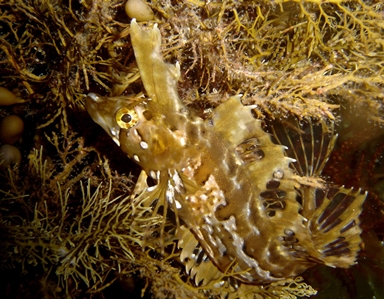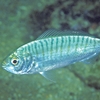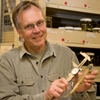General Description
Body compressed, snout very long, pointed; first dorsal fin tall, short-based, arising just behind the eye, followed by a separate long-based second dorsal fin; pelvic fins with a tiny spine and three rays; orbital tentacle long, slender, or with several small lateral lobes; nasal tentacle simple. Variably reddish to brown, usually with complex markings. To 30 cm.
Biology
This species is one of the largest weedfishes, and is often seen by divers.
Habitat
Amongst algae and sand on rocky reefs, to depth of 5 m.
Reefs
Soft substrates
Distribution guide
South-eastern Australia.
Species Group
Fishes › Weedfishes and snakeblennies
Depth
Water Column
Max Size
30 cm
Commercial Species
No
Global Dispersal
Native to Australia
Conservation Status
- DSE Advisory List : Not listed
- EPBC Act 1999 : Not listed
- IUCN Red List : Not listed






